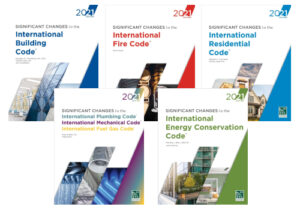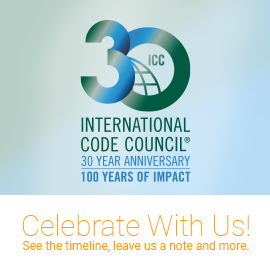
Significant changes to corridor and balcony sprinklers in the 2021 International Building Code
A modification to Section 903.3.1.2.2 (Corridor and Balcony Sprinklers) of the 2021 International Building Code (IBC) states that sprinkler protection must now be extended into corridors and balconies used in the means of egress, even though the location may be exempt based upon the NFPA 13R standard.
To fully understand the intent of this code change, it is important to review the way that reference standards are applied with the IBC and how it dictates which document takes precedence. A review of Section 102.4 indicates (a) that if there is a conflict, the code takes precedence, and (b) that where a subject is addressed both within the code and the standard, the scope from the code is the controlling provision. In this case, the IBC scopes where sprinkler systems are required, but then indicates that they follow the technical provisions of the standard by stating the systems are to be “installed throughout in accordance with NFPA 13R.” Under the technical requirements of that standard, any space “open” to outside temperature is allowed to eliminate the sprinkler protection in that unconditioned/open area. At issue is whether a space is interior and needs sprinkler protection or is exterior (read as “open” from the NFPA perspective) and does not need the sprinklers. While the IBC has historically addressed the requirement in some cases (see Item 3.1 in Exception 3 of IBC Section 1027.6 for open-ended corridors), where specific guidance is not provided, the provisions of the standard could be used to eliminate the sprinklers even though the egress element is essentially enclosed with only something minor leaving it “open” and unconditioned. The added scoping establishes priority over the standard and thus mandates that the sprinkler protection is required in these situations even though it may generally be exempt under the standard itself.
Code users should not view these changes as modifications to the IBC provisions such as Exception 3 in Section 1027.6, but instead view it as limiting the exemptions that the NFPA 13R standard would otherwise allow. Where a building is not required to be sprinklered, it is not the intent that this section would require a sprinkler system to be installed in these listed locations. This subsection of Section 903.3.1.2 is only applicable where some other provision (such as Section 903.2.8) has already required the sprinkler system to be installed, and once that occurs, Section 903.3.1.2.2 mandates that the required system also be extended into these elements of the means of egress even though the NFPA 13R standard indicates that the protection is not needed due to being “open” and unconditioned.
Another point to emphasize is that while Section 903.3.1.2.1 does require the NFPA 13R sprinkler protection to be extended onto the balconies and decks, it is important to recognize the difference in the scoping of that section compared to egress balconies addressed by Item 5 of the new text. While Section 903.3.1.2.1 regulates the balconies and decks “of dwelling units and sleeping units” under two conditions, the new text in Section 903.3.1.2.2 applies to “egress balconies” that serve as a part of the means of egress system and may serve the overall building or areas that are not a part of a dwelling unit or sleeping unit. Therefore, the spaces regulated by this Item 5 are different than the spaces regulated by Section 903.3.1.2.1.
Read the full significant change.
 The 2021 Significant Changes guides are available for the International Building, Fire, Residential, Energy Conservation, Plumbing, Mechanical and Fuel Gas Codes. This valuable series can help any code user save time by zeroing in on the most critical changes in the 2021 International Codes. The Code Council’s technical experts provide summaries, analysis and graphics for these changes making them clear and easy to understand. Each edition provides a comprehensive analysis of significant changes since the 2018 edition, offering key insights into its contents and implications. Each change analysis features the affected code sections and identifies the change with strikethroughs and underlines to show modifications to the existing language. Each change is accompanied by a quick summary, detailed illustrations, and a discussion of its significance, which brings the technical jargon of the code to life in a real-world setting.
The 2021 Significant Changes guides are available for the International Building, Fire, Residential, Energy Conservation, Plumbing, Mechanical and Fuel Gas Codes. This valuable series can help any code user save time by zeroing in on the most critical changes in the 2021 International Codes. The Code Council’s technical experts provide summaries, analysis and graphics for these changes making them clear and easy to understand. Each edition provides a comprehensive analysis of significant changes since the 2018 edition, offering key insights into its contents and implications. Each change analysis features the affected code sections and identifies the change with strikethroughs and underlines to show modifications to the existing language. Each change is accompanied by a quick summary, detailed illustrations, and a discussion of its significance, which brings the technical jargon of the code to life in a real-world setting.
Significant Changes to the International Building Code, 2021 Edition is available in the ICC Store or through Digital Codes Premium.





